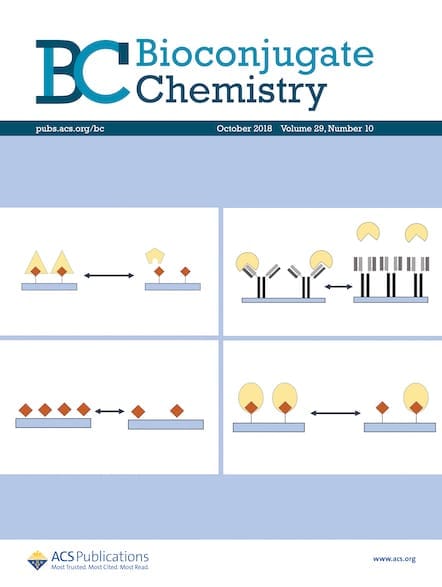Bioconjugate Chemistry and the ACS Division of Polymeric Materials: Science and Engineering present the 2022 Bioconjugate Chemistry Lectureship Award, which recognizes the contributions of an individual who has made a major impact working at the interface between the synthetic and biological worlds. Meet the Recipient This year’s recipient is Dr. Neal K. Devaraj at the University of California, […]

Bioconjugate Chemistry and the ACS Division of Polymeric Materials: Science and Engineering present the 2022 Bioconjugate Chemistry Lectureship Award, which recognizes the contributions of an individual who has made a major impact working at the interface between the synthetic and biological worlds.
Meet the Recipient
This year’s recipient is Dr. Neal K. Devaraj at the University of California, San Diego. Professor Devaraj is recognized for groundbreaking contributions to the field of bioorthogonal chemistry and advances in understanding the origins of cellular life.
Neal K. Devaraj is a Professor and Murray Goodman Endowed Chair of Chemistry and Biochemistry at the University of California San Diego (UCSD). A major research thrust of his lab is developing chemical reactions for understanding the transition between nonliving and living matter. Along these lines, his research group has developed approaches for the in-situ synthesis of synthetic cell membranes by using bioconjugation reactions to “stitch” together lipid fragments. This work has enabled the demonstration of self-reproducing lipid vesicles and artificial membranes that can remodel their chemical structure. Recently, his lab has developed bioconjugation techniques to synthesize lipid species within living cells, enabling studies that decipher how lipid structure affects cellular function.
For his scientific contributions, Professor Devaraj has been recognized with several awards including the American Chemical Society Award in Pure Chemistry, Blavatnik National Award in Chemistry, the Eli Lilly Award in Biological Chemistry, The Leo Hendrik Baekeland Award, a Guggenheim Fellowship in the Natural Sciences, and the Tetrahedron Young Investigator Award.
What does receiving this award mean to you?
It is an incredible honor for myself and for my research group since bioconjugation reactions are central to most of our scientific projects. This award also further encourages us to pursue high risk scientific projects at the interface between chemistry and biology.
How did you first become interested in researching bioconjugate chemistry and your area of study?
My graduate work at Stanford with Prof. James Collman and Prof. Chris Chidsey was in electrochemistry, and I was conjugating very complex molecules to electrode surfaces. While I never worked on biomolecules, after attending a seminar by Prof. Carolyn Bertozzi, I was deeply inspired and realized that what I knew about modifying synthetic surfaces might also be applied to modifying cell surfaces. Soon after I began exploring the use of bioconjugation chemistry, specifically tetrazine reactions, during my postdoctoral studies with Prof. Ralph Weissleder.
How would you describe your research to someone working outside the field?
We are using bioconjugation reactions to construct more complex molecules from smaller building blocks to mimic the biosynthetic processes that occur in living organisms. For instance, we are putting together small molecules to create larger lipid species that then self-assemble and spontaneously form cell-like membranes. To put it another way, we are developing synthetic anabolic reactions to create cell-like materials.
What are you working on currently?
We have recently been using bioconjugation chemistry to assemble lipid structures de novo (that is in the absence of preexisting membranes) from very simple building blocks. We are making progress toward this goal by combining enzymatic and purely chemical approaches to generate cell-like compartments using very simple feedstocks.
What do you think is the biggest challenge currently in your area of research?
How can we create self-contained, self-maintaining assemblies that exist far from equilibrium and have emergent properties that we normally associate with living materials?
What advances do you hope to see in your field over the next decade?
I believe scientists will continue blurring the boundary between nonliving and living matter and that we will be closer to creating artificial cells that are capable of growth, reproduction, and even evolution.
Explore Professor Devaraj’s recently published articles in ACS Publications Journals.
The Bioconjugate Chemistry Lectureship Award 2022 recipient will present at the ACS 2022 Fall National Meeting.
